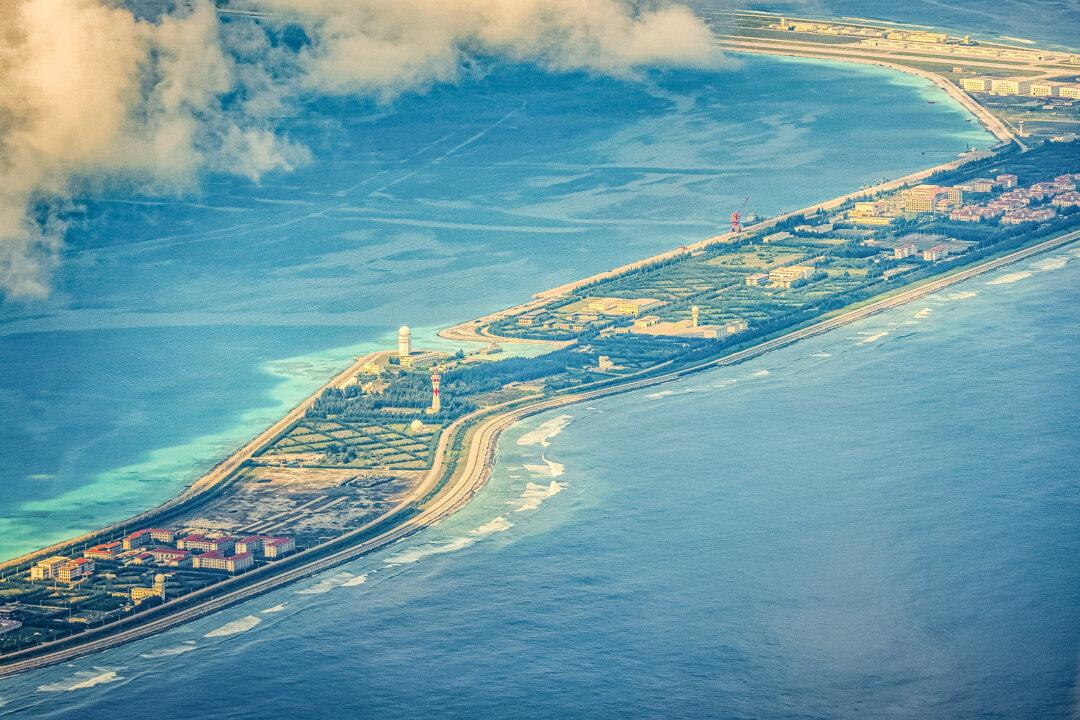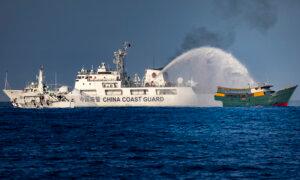China could use the South China Sea to gauge the U.S. response to its allies as the communist regime extends its military expansion in the waterway, which is vital to the global economy, according to experts.
In a June 17 encounter, the Philippines said its personnel were injured, and vessels were damaged after a clash between boats from Manila and Beijing near Second Thomas Shoal, part of the disputed Spratly Islands in the South China Sea.
The Chinese Communist Party’s (CCP’s) defense ministry said the Philippine side “deliberately and dangerously” approached its naval ships, causing the collision. The Philippines’ foreign ministry blamed the Chinese authorities’ “illegal and aggressive actions” for the accident.
June Teufel Dreyer, an expert on the U.S.–China relationship and professor of political science at the University of Miami, noted that the Chinese regime has long sought to exert pressure on the Philippines.
“The Chinese have been pushing, pushing, pushing on the Philippines for a long time,” she told The Epoch Times on June 22.
Former Philippine President Rodrigo Roa Duterte pursued a pro-China policy and switched his position between the United States and China quite a few times, which led to the deterioration of relations between the Philippines and the United States. That changed in 2022, when Ferdinand Marcos Jr. took office.
While Mr. Marcos wants to deter the CCP, Ms. Teufel Dreyer cautioned that he has few resources to accomplish that.
“He does want to push back,” she said of Mr. Marcos. “But he has very limited means to do so. And he is also not sure how much he can count on the United States, because the United States is involved, although not formally involved, in one war in Ukraine versus Russia and another war in Israel versus Hamas.”
Srikanth Kondapalli, dean of the School of International Studies and professor of China studies at Jawaharlal Nehru University in New Delhi, India, characterized China’s strategy as “two-pronged.”
All-Out Invasion?
After the maritime conflict between the Philippines and China, U.S. Secretary of State Antony Blinken spoke by telephone with Philippine Foreign Secretary Enrique Manalo on June 19, during which he emphasized the United States’ “ironclad commitments to the Philippines under the Mutual Defense Treaty,” the State Department said.Mr. Kondapalli, however, said he believes that, in practice, the United States would be “extremely cautious” about initiating the U.S.-Philippines Mutual Defense Treaty, a bilateral defense agreement that both nations commit to supporting each other if either country is attacked by an external party.
In addition, he noted that the United States doesn’t have a base such as Subic Bay in the region, which will cause certain implementation difficulties. Subic Bay, which was closed in 1992, was once an important outpost of the U.S. military in the South China Sea.
A similar viewpoint was expressed by Ms. Teufel Dreyer.
She said she believes that the United States will invoke the treaty if the Chinese regime initiates an “all-out invasion.”
‘Testing the Water’
It’s possible that the regime uses its military aggression in the South China Sea to test the potential for conflict in the Taiwan Strait and gauge the U.S. resolve to defend its allies, Ms. Teufel Dreyer said. However, she said the situation in Taiwan is “very different” from that in the Philippines.Taiwan “has shown itself much more willing and capable of fighting back than the Philippines,” she said.
Manila, however, intends to rely on the help from its allies.
Ms. Teufel Dreyer said that the Philippines habitually let the United States stand up for them.
“In other words, they will allow the United States to fight with China, but [they] basically stayed out of it,” she said.
That’s why, she said, the United States has “a lot more at stake” in Taiwan than it does in the Philippines.
“China has no problem with testing the waters” in the South China Sea, and to see what the U.S. reactions would be, she added.







